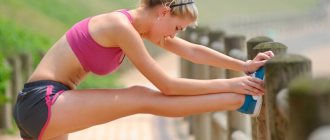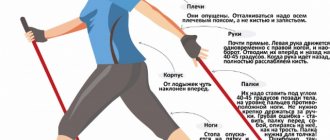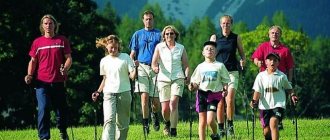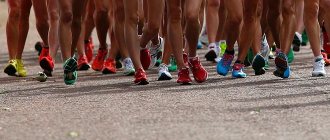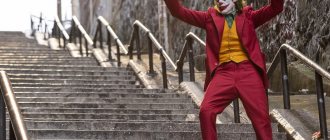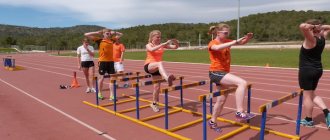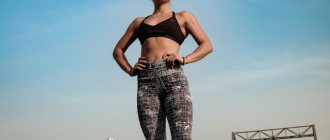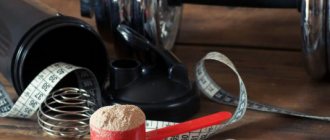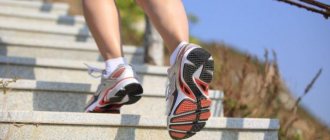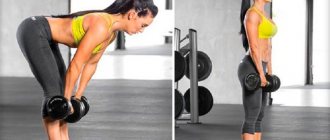What physical movement could be more understandable and natural than walking? Almost every person begins his walking journey in infancy and ends in old age, without even thinking about technique, speed, and benefits for the body.
However, some people begin to have a completely different attitude towards walking when pursuing some goals. For example: if you want to lose excess weight, train leg muscles, develop the cardiovascular system, achieve sports results.
For each goal, individual characteristics of the body, route, personal preferences, you can choose your own type of walking.
In total, it is customary to distinguish 4 varieties:
- Scandinavian type of walking;
- Recreational walking;
- Wellness;
- Sports (marathon, Olympic).
For each type there is a special technique, speed, distances, and additional equipment. But only one of them is an Olympic track and field sport. From the name it is clear that this is race walking.
Considering that this is a competitive discipline, it implies strict requirements for execution technique and requires special training.
How did it happen that walking became a sport? Before we talk about race walking techniques, let's dive into history.
The history of race walking
The beginnings of race walking originated in the distant 19th century. The first competition took place in 1882 in Great Britain and involved covering a distance of 7 miles (11.2 km).
Then the developing discipline rightfully began to be called “marathon walking”, because colossal distances were covered:
- Vienna-Berlin: 578 km;
- Paris-Belfort: 496 km;
- Turin—Marseille—Barcelona: 1100 km.
Of course, the rules of such competitions had their own characteristics. Athletes could stop to eat and sleep. And the one who walked the maximum distance in 6 days became the winner.
Download training plans to prepare for the marathon and half marathon.
Start preparing right now!
Everything changed in 1908, when race walking of 3.5 and 10 km was included in the Olympic competition program.
In 1932, the Olympic walking was expanded to a distance of 50 km. The 20 km distance was included in the Olympic composition only in 1956.
Since then, the discipline began to spread throughout the world. And in 1992 it became available to women athletes at a distance of 10 km.
Since 2000, women began to participate in 20 km competitions.
The history of race walking is still being formed. The plan is to remove the 50 km distance from the competition to leave the maximum distance at 35 km.
Walking on level ground
It is recommended to test yourself and your capabilities first over a short distance. Both asphalt and forest paths can serve as a place for walking. The main thing is that the surface is flat and the path is not too winding. Before training, you should do a warm-up, which includes a few minutes of quiet walking while simultaneously warming up the calf and hip muscles. Then race walking begins at a moderate pace. At this stage, it is important to determine your breathing rate and check your pulse.
Gradually the walking speed increases to a maximum. Subsequently, it is recommended to alternate the pace of the workout. It is not advisable to conquer long distances in your first lessons, even on flat terrain. After class, you should not suddenly stop or sit down, as the body still needs to get used to the slow pace for some time.
Differences in race walking
From normal walking
It would seem that race walking differs from walking only in speed. An ordinary pedestrian moves at a pace of 4-5 km/h, and when he is late, at a maximum speed of 6 km/h. Moreover, the number of steps per minute (cadence) is 100-120, and the length of one step is up to 70 cm. Starting from 7 km/h, a person automatically switches to jogging.
The pace of professionals can reach 16 km/h - this is much faster than the speed of an amateur runner. In this case, the cadence can reach 200/min, and the stride length can be 1 m.
But there are other differences:
- The arms are bent at the elbows and move quite actively;
- The body and pelvis characteristically swing to aid movement;
- The body and head are held strictly vertical.
It is important to mention that during race walking, unlike Nordic walking, special devices (poles) are not used.
From running
If you think that race walking is slow running, then you are deeply mistaken. The technique of these two disciplines is radically different. A runner without special training at a race walking competition will be disqualified in the first minutes!
So, what is the difference between Olympic walking and running:
- There is no flight phase. Instead, there is a double-support phase: when both feet are on the ground;
- The knee does not bend when moving the leg forward - the leg remains straight. There is a strong movement of the hip forward with a straight leg;
- The foot lands from the heel and rolls onto the toe, rather than from the midfoot under the center of gravity;
- The pelvis and torso sway rhythmically, helping the legs work.
Agree, this technique is difficult to confuse with running.
Preparation rules
We have studied the main characteristics of race walking, and now let’s talk about the preparation process.
- First of all, as mentioned above, you should buy good equipment that does not restrict movement, is comfortable and convenient. Particular attention is paid to high-quality running shoes;
- Secondly, think about where you will study. A park with a lot of greenery is ideal;
- The last meal before training should be 2-3 hours;
- Buy useful gadgets to receive your body’s signals on time. For example, buy a running watch, it will be very useful for this type of activity.
To avoid getting bored, take a player with your favorite tracks with you. It has been proven that an athlete's endurance increases by as much as 20% if he exercises to music!
So, now you know how to properly do race walking for weight loss and are well acquainted with the technique. We hope that the workouts will be enjoyable for you, because unlike running, they are a little easier due to less stress on your legs. Remember about the phases of race walking - start slowly, gradually speed up, and towards the end of the distance, slow down. If you learn to organize your classes correctly, strictly follow the schedule, and give your all, the results will not take long to arrive. Have fun on the treadmill!
Execution technique
We looked at the main differences between race walking and walking and running. Now let's look specifically at each individual element of the movement so as not to miss anything.
Leg movements
- The most important rule of race walking is maintaining the phase of double support on the surface. The idea is that the front foot must hit the ground with the heel before the back foot pushes off the surface with the toe. At this moment, both feet are on the ground. The phase in which the body lifts off the ground with both legs is missing!
- The knee does not bend. Even a minimal angle can cause disqualification;
- There is a rhythmic rocking of the pelvic girdle. When the right foot lands on the heel, the pelvis shifts to the right, then vice versa. This helps you move faster;
- Marathon walking involves a soft landing on the heel without hammering the foot, rolling onto the toes + pushing off with the toes.
Hands
- Arms bent at elbows 90 degrees;
- Shoulders are relaxed, lowered;
- Hands are freely gathered into a fist - not clamped!
- Rapid oscillatory movements are made “back and forth” from hip level to chest level.
Body + head
- The back is kept straight, without tension;
- The head looks straight - does not throw back!
- The body sways to the sides, opposite to the movement of the pelvis. That is, when the right foot lands on the heel, the pelvis tilts to the right and the body to the left. This ensures high speed with excellent coordination of movements.
How to warm up properly
First, you need to start by stretching your calf muscles. To do this, you need to rest your hands on the wall, move one leg back, and raise and lower your body with the other (supporting leg). The exercise should consist of 8-10 approaches and last up to 7 minutes.
To warm up the back of your thigh, stretch your leg forward and place it on a stool. Next, you need to slightly tilt the body towards it. The front area of the thigh is warmed up with the following exercise: one leg is the supporting leg, and they try to bring the foot of the second as close as possible to the buttocks with their hand.
The hips are warmed up by alternately lunging the body forward and backward with the foot placed on a stool. For this control it is important to relax extremely.
According to athletes, warm-up should last at least 20 minutes. During this time, all muscles should not only be stretched, but also warmed up well in order to protect yourself from unnecessary injury.
Competition rules
Olympic walking involves a huge number of rules. Their compliance is monitored by a whole team of judges - from 6 to 9 people. Moreover, the placement of judges along the distance is also of fundamental importance.
Let's discuss everything in order:
- There are a number of violations that are recorded by the judges: loss of contact of the legs with the ground, bending of the knee.
- For the first violation, the athlete is shown a yellow card with a wavy line, for the second - a yellow card with 2 straight segments at an angle of 150 degrees;
- One judge can only show one yellow card to one athlete. If the same violation is repeatedly recorded by the same athlete, the judge gives a red card to the chief “arbiter”;
- When one athlete receives 3 red cards from different judges, he will be disqualified from the competition.
Features of judging are as follows:
- Violations are detected visually. Therefore, in the future, marathon walking will be complemented by the introduction of insoles with electronic chips - RWECS technology. Such insoles will allow you to accurately record violations when your feet lose contact with the ground;
- The judges are placed according to the distance at the most difficult places. For example, when descending at an angle, it is difficult for an athlete to maintain high speed + avoid the flight phase. This is where the maximum number of violations is recorded.
Monthly course for weight loss
In the first week, you should do three walking sessions at a slow pace. Each workout should not last more than 20 minutes. At this stage, it is important to understand how to breathe correctly and control the load.
In the second week, race walking begins. The speed varies depending on how you feel. The duration of one workout is up to 30 minutes. It’s not worth testing yourself for serious loads. If you feel tired, you can switch to a slower pace. In the third week, the duration of the lesson increases to 40 minutes. In addition, the number of workouts should already reach 4-5. At this stage, you can use special weight loss belts.
The final 7-day period should take place in an intensive mode. Training time varies up to an hour, but their number is still up to 5 sessions. It is important here to alternate the walking pace from maximum to average every 10 minutes. As numerous reviews show, in a month of training using this method you can lose up to 12 kilograms.
Distances
Athletics is a very diverse set of sports disciplines. Even Olympic walking involves competitions at different distances and surfaces.
There are competitions in the stadium or outside the stadium. Acceptable distances are classified depending on the gender of the participants. Let's look at the main types of race walking.
Outside the stadium:
- For men: 5 km, 20 km, 35 km, 50 km.
- For women: 5 km, 20 km, 35 km.
In stadium conditions
- on a 400-meter open track: 10 km, 20 km;
- on a 200-meter indoor track: 5 km.
What successes have athletes achieved in this sport?
Records (table)
| distance | floor | time | pace | date | champion |
| 20 km | m | 1:16:36 | 3:50 min/km | 15.03.2015 | Yusuke Suzuki (Japan) |
| 20 km | and | 1:24:38 | 4:14 min/km | 06.06.2015 | Liu Hong (China) |
| 50 km | m | 3:32:33 | 4:15 min/km | 15.08.2014 | Yoann Dini (France) |
| 50 km | and | 3:59:15 | 4:47 min/km | 09.03.2019 | Liu Hong (China) |
Load calculation
If you approach walking exercises wisely, they will never harm your health. Each person is unique in himself, which means that for each there is an individual training program. In the first couples, you should not take as a basis the indicators of people who have been involved in sports for a long time, since they are already subject to heavy loads. As for the distance, a weekly race walk of 50 km is recommended for men, and about 40 km for women. However, only experienced runners can use these indicators as a guide. For beginners, it is better to start with 2-3 kilometers per day and increase the distance by 500 meters every week if health allows.
This sport has no age restrictions, but it all depends on the body. During your first workouts, it is recommended to regularly check your current heart rate, which should not exceed the threshold of 100 beats per minute. If at the beginning of the lesson there is discomfort in the muscles or joints, then you should immediately stop walking. In such cases, you should not stop abruptly; it is better to gradually slow down.
The benefits of race walking
Due to the specific movements of the body and the very concept of “walking,” most people do not perceive this type of training as a serious load. Although race walking has a huge number of benefits for the body!
Weight loss
The main question for ordinary people is: is it possible to lose weight with race walking? - Definitely yes!
The marathon walking technique uses all the muscles of the body and actively burns calories. When walking for a long time at an average pace, fat is used as the main source of energy. In one workout you can burn 500 kcal or even more!
Another plus for people with a high BMI: Olympic walking puts less stress on bones and joints, and therefore does not injure the body like running. There is no flight phase, which means your knees are safe!
Health improvement
Aerobic exercise actively involves the cardiovascular + respiratory + nervous system.
- Resting heart rate decreases;
- The tidal volume of the lungs increases;
- The level of hemoglobin + red blood cells in the blood increases;
- Neurotransmitters of happiness are released: endorphin, dopamine, serotonin;
- Oxygenation of the brain + internal organs improves.
Benefits and harms
It is not at all necessary to engage in this sport professionally to achieve results. Many today practice discipline for health purposes, in order to tighten their figure, improve their health, and warm up. Let's look at the benefits of race walking, even if you do it unprofessionally:
- Normalizes the activity of the cardiovascular system;
- Trains breathing;
- Stabilizes the functioning of the digestive system;
- Relaxes, helps cope with depression;
- Promotes weight loss;
- Helps maintain muscle tone.
Race walking is unlikely to cause any harm, because it is considered one of the safest sports, however, if you have contraindications for health reasons, harm is possible.
In what cases is such physical activity prohibited? For blood pressure, exacerbation of chronic diseases, heart problems, diabetes, problems with the retina, ARVI, after a heart attack or stroke.
Features of sports shoes
To make marathon walking comfortable and achieve impressive results, it is important to choose the right shoes.
There are special sneakers for race walking - for example, from Reshod.
However, you can also use running shoes with the following characteristics:
- Sole with a wide platform, non-bending;
- Heel with good shock absorption, beveled;
- The shoes are light and fit comfortably on the foot.
Walking on hilly terrain
Walking on small slopes is beneficial for people regardless of age. However, training on hilly terrain is only recommended for experienced athletes who are used to coping with heavy loads every day. In the photo, race walking when climbing a slope looks impressive. All the muscles are tense, the wind is blowing your hair - and so the finishing point at the top beckons, but in reality it is much more difficult than it might seem. Walking on a hilly surface requires many times more energy than walking on a flat surface. Such activities are contraindicated for beginners. As for the warm-up, it is no different from warming up before training on flat ground, with the exception that exercises for the muscles of the arms and forearms are added to the complex.
Tips for Beginners
Have you decided to take up race walking? Then follow our simple tips:
- Start with short workouts (15-20 minutes) 3-4 times/week. Increase the pace and duration of training by no more than 10% per week;
- Record yourself on video to see technical errors + correct them;
- Be sure to warm up before training and cool down after;
- Close the carbohydrate-protein window after training, drink isotonic liquids;
- There should be 1.5-3 hours between training and meals (depending on the composition of the diet);
- Choose a soft track (dirt, arena) without holes or bumps. A treadmill will not work.
Let's start classes
First, you need to understand why a person starts playing sports. If he wants to strengthen his muscles or just warm up, then it is enough to arrange daily half-hour classes. Some women set weight loss goals. In this case, walks should take up to an hour at a fast pace.
Many beginners start classes without warming up and without knowing basic skills. It is important to understand what race walking is, how to move correctly, how to breathe, etc. It is strictly contraindicated to strain the body in the first month of training. It is better to start classes early in the morning. At this time, it is easier to burn the maximum number of calories. In addition, morning workouts will tone the body for the rest of the day.
Teaching Methodology
Before starting classes, you should study the analysis and basics of race walking techniques under the guidance of a trainer. The training methodology will include the following points:
- Introduction to technology. At this stage, the coach shows at a slow pace what the race walking technique is and explains the features of this sport. Then the beginner will have to independently repeat the correct body movements, and the coach will analyze the errors and determine a training program.
- Methods of teaching the movement of the legs and pelvis. During slow walking, the beginner is taught how to correctly turn the body and move the arms at the moment when the feet are placed on the ground. This uses counter-rotation analysis and technique: the shoulders rotate to the right as the pelvis rotates to the left. In this case, the leg lowered to the ground remains straight until the second leg is lowered to the ground. Workouts are usually done in a straight, drawn line - this allows the legs to move close to each other.
- Methods of teaching the movement of the arms and shoulder girdle. The arms should bend at an obtuse or right angle, not intersect and move strictly in a straight line. You need to relax your shoulders, do not strain your arms and move them freely. If the range of movement of the arms is not wide enough, training is carried out with the arms down.
- Methods of teaching proper breathing. It is necessary to inhale and exhale deeply and evenly. Breathing should not be shortened - if this happens, you need to stop training.
- Methods of teaching individual elements of race walking. To hone the technique, various exercises are used for the body, limbs, and head. The trainer analyzes the length of the step, the method of planting the foot, and moving the legs.
- Improving technology. This stage involves combining the skills acquired in the process of learning and analysis, and long-term hard training to achieve coordination of movements.
This sports discipline has a number of its own methods and standards that are taken into account during competitions. In addition to technique, great importance is given to speed, which can be increased by lengthening the stride or increasing the frequency of steps. In the second case, there is a risk of switching to running, which may serve as a reason for disqualification from the competition, so it is recommended to use this method of increasing speed only for experienced athletes.
